Uganda, Rwanda, gorillas and their human neighbours, Scotland on Sunday travel
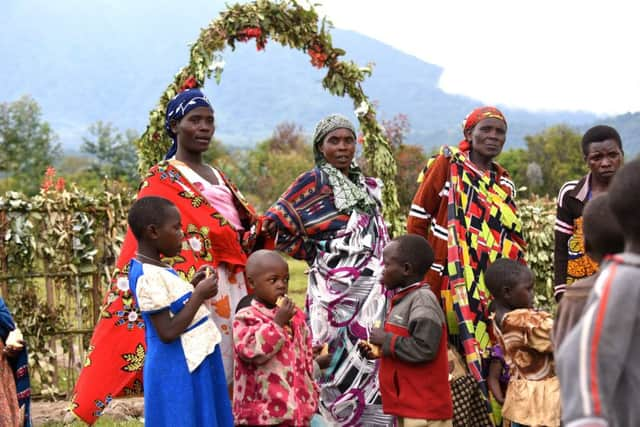

Rising dramatically from the East African landscape, the Virunga Mountains are a mighty chain of eight volcanoes, stretching across the borders of Uganda, Rwanda and the Democratic Republic of the Congo (DRC). They provide the setting for a complex story of conservation, displacement and rescue in one of the most beautiful parts of the world.
There are no mountain gorillas in captivity; due to their precise habitat requirements, they wouldn’t survive. Their more populous lowland cousins, from the forests of Central Africa, can be found in zoos. But mountain gorillas live only amid the Virungas and in Uganda’s Bwindi Impenetrable Forest Park. It is a fragile population and their continued protection is imperative.
Advertisement
Hide AdAdvertisement
Hide AdIn 1985, there were 248 of these endangered apes left in the world. By 2010, conservationists had managed to get the numbers up to about 800, and thanks to the likes of Praveen Moman, the future looks positive.
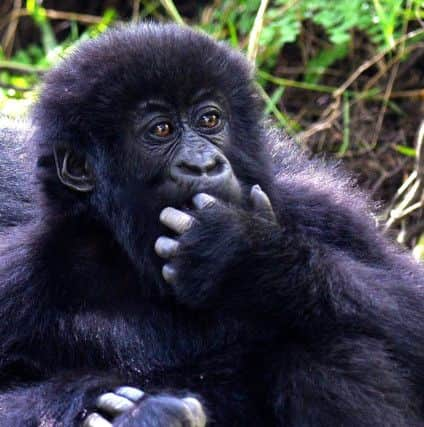

He is the founder and owner of luxury lodge company Volcanoes Safaris, which has been at the forefront of gorilla and chimpanzee conservation and tourism in Uganda and Rwanda since 1997. Its four lodges include Virunga, a luxury gorilla experience in Rwanda; Mount Gahinga in Uganda for gorilla tracking, Batwa culture and trekking; Bwindi Lodge in Uganda for gorilla tracking and trekking; and Kyambura Gorge, a contemporary chimpanzee and wildlife lodge in Uganda.
I visited Mount Gahinga Lodge, at the foot of the Mgahinga Mountains (the Ugandan part of the Virungas), which were declared a national park in 1991. During my visit I met Dr Johannes Refisch of GRASP (the UN’s Great Apes Survival Partnership), a leading researcher on great apes.
Moman and Refisch beamed as they announced increased official figures from the 2017-2018 census for the wild mountain gorillas.
“Today, there are 1,004, with 604 living in 41 social groups in Uganda, Rwanda and Democratic Republic of the Congo, and another 400 in Bwindi,” said Refisch. “Despite the many challenges, including insecurity in DRC, the numbers have gone up. And this does not only benefit conservation, as it creates tangible economic benefits for local communities as well.”
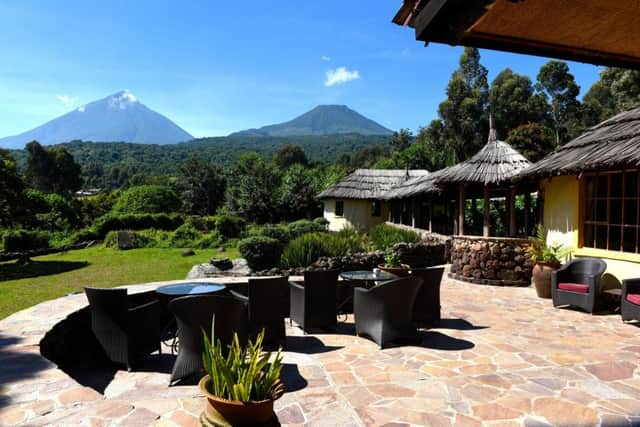

The three countries do not give mountain gorilla numbers per country, as this is a truly transboundary population and groups or individuals cross the borders regularly.
Getting to Mount Gahinga Lodge is an adventure of its own. After a one-hour flight from Entebbe to the nearest landing strip to the lodge, you bounce for an hour along bumpy, ungraded dirt roads with gigantic potholes, passing through dusty but vibrant towns, surrounded by green valleys.
On my first morning at Mount Gahinga I woke to birdsong and sun pouring through my window, although at times it can be surprisingly cold, with mornings of 10C. The land around was lush, with clear blue skies over landscapes of neatly farmed green fields strewn with large volcanic rocks. It is a relaxing place, but there is another story which unfolded on these dense moss and bamboo covered volcanic slopes.
Advertisement
Hide AdAdvertisement
Hide AdFor centuries the Gahinga Batwa people – forest-dwelling hunter-gatherers once referred to as pygmies – lived side by side with the gorillas. The Batwa were not a major threat to the animals, but 25 years ago they were evicted from their forest homes and while the gorilla conservation projects proved successful, the Batwa became conservation refugees. With no support from the government or anyone else, displaced, unwanted and desperate, they lived an alien lifestyle on the forest edge, working on farms and labouring. As they struggled and starved in abject poverty, exposed to disease and abuse, their future looked bleak. But then Moman, who whose years of working in tourism and gorilla conservation had made him a close student of the Batwa and their culture, came to the rescue. Buying ten acres of land close to Gahinga Lodge and building materials, he asked the architect responsible for the lodges, Felix Holland of Studio FH Architects, to work with the Batwa to design a village.
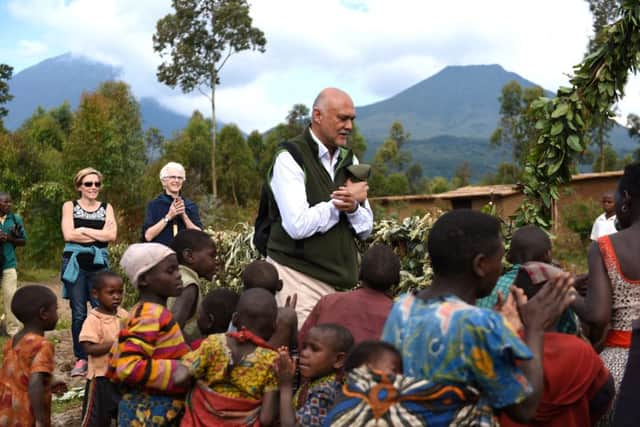

While I was there, the village was officially opened, a permanent settlement for the community of 100 adults and children, 25 years after they were forced out of the Mgahinga National Park.
“I knew the Batwa existed since the first time I came here,” said Moman. “I thought, ‘Why shouldn’t we do something, they are our neighbours, our people? They’ve been thrown out of the park, with no rights or land.’”
At first the Batwa were reluctant, as others had let them down, but building started last year. Moman’s organisation provided the materials and land, and the Batwa the labour, spending months carrying on their heads for miles the soil used for plaster. “Every time I come to the village, the Batwa seem more alert and proactive, they have more hope, that’s good,” he said.
The Batwa’s traditional forest dwellings were very small domed huts made of grass and twigs and initially the houses they envisaged had tiny one-by-two-metre rooms, but they were persuaded to make the rooms larger. The outcome is a timber sub-frame of eucalyptus poles, and a bamboo grid covered with earth plaster holding everything together – self-sustaining materials that are free and easily maintained.
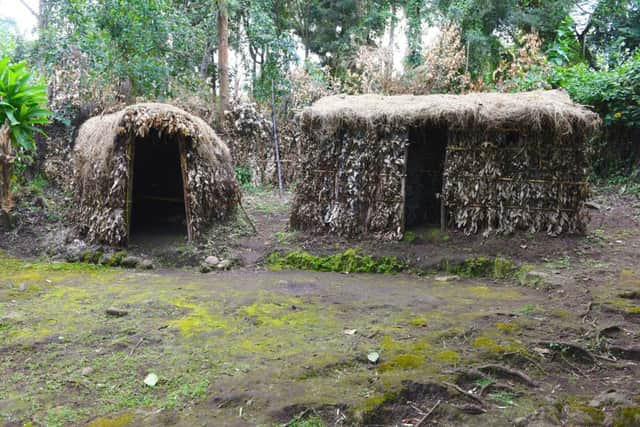

At the opening at the village, a short walk through surrounding farmland from the lodge, we were welcomed by the Batwa, who performed traditional dances and proudly took our hands for a tour of their new homes and thatched vocational centre. At the nearby community centre, the main focal point of the village and location of planned adult education classes, their skilled basketwork, carvings and other craftwork were for sale – another opportunity for the Batwa to create income. There’s also a Batwa Heritage Trail close to Mount Gahinga Lodge, where Batwa children, and visitors, can connect to the Batwa’s ancestral past. Gardens have been built and there will be a time when they can sell what they grow, their former poorly or unpaid labouring work behind them and their goal now to be self-sufficient landowners. The village continues to be supported by Volcanoes Safaris and Volcanoes Safaris Partnership Trust, as well as donations from guests.
A people who had everything taken from them, the Batwa now have a chance to improve their lives. In the forests of the Virunga Mountains the future looks positive for animals and humans alike.
FACTFILE
You’ll need a visa for Uganda and the best option is an East African tourist visa, which is good for Uganda and also allows access to nearby airports in Rwanda and Kenya. However, you must first enter the country that issued the visa, or you’ll have to pay $50 on the spot for another visa to enter Uganda.
Advertisement
Hide AdAdvertisement
Hide AdMount Gahinga Lodge is surrounded by volcanoes and within walking distance of Uganda’s Mgahinga Gorilla National Park. Its six recently refurbished bandas are solar-powered. Rates start at $210 per person per night sharing, all-inclusive. volcanoessafaris.com/mount-gahinga-lodge-uganda; www.volcanoessafaris.com; [email protected]